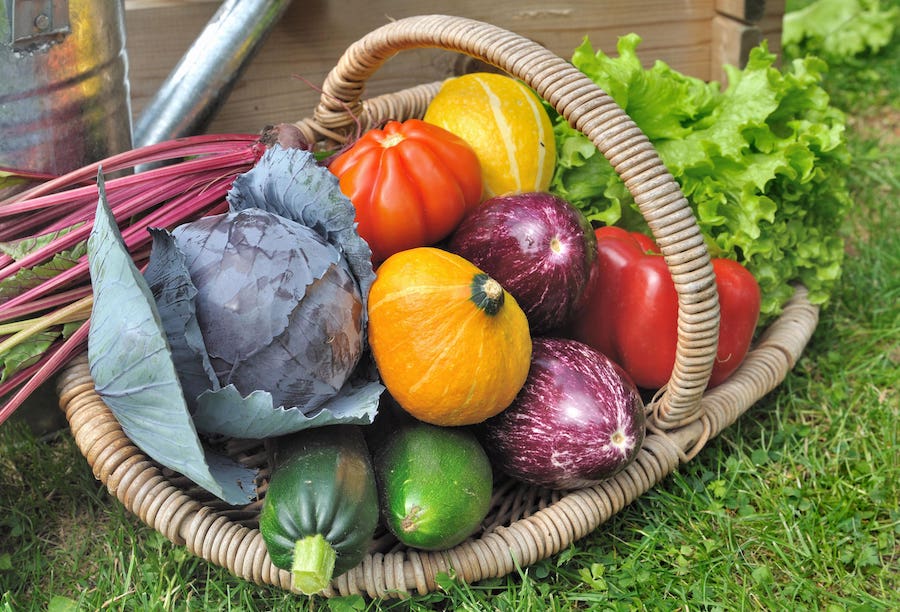Tips and tricks to preserve your harvest
Blanching, freezing and liquidising will help you cope with gluts
Anyone who grows fruit and vegetables should now be reaping the rewards of their hard labour, as many crops are ready for harvesting.
The problem is, how do you store them all – especially if you’re just about to go on holiday?
Many families cannot manage all the runner beans and courgettes they have grown this season, let alone the summer fruit which has to be picked when ripe.
View this post on Instagram
Of course, there’s the option of giving the surplus to friends, family and neighbours – or even leaving a box outside your front gate inviting people to help themselves.
But so often, people end up either chucking away their surplus or throwing it on the compost heap.
Yet there are crops harvested throughout the summer which you can enjoy eating in the months ahead, provided you store them properly.
And if you run out of space in your freezer, remember that potatoes, carrots, beetroots, parsnips, leeks and sprouts can be left in the ground or on the plant until required in the winter.
Blanching
View this post on Instagram
Many vegetables, such as courgettes, green beans and sweetcorn, will deteriorate and lose their colour and flavour if you just chuck them in the freezer after picking.
Blanching – boiling for a very short period – is the answer if you want your veg to retain their flavour, texture and colour.
Put them into boiling water for up to three minutes (sweetcorn requires up to six minutes) before cooling them quickly by plunging them into a bowl of iced water. Once you’ve done that and they’ve been cooled and patted dry, they’re ready for freezing.
Liquidising
Keep other surpluses of vegetables by liquidising them, freezing them in bags or food containers and using them as a base for soup.
Summer fruits

Raspberry lovers should freeze raspberries in a single layer on trays. Once frozen, the fruits should be transferred to freezer bags or airtight containers, which makes them easier to separate when required.
Redcurrants also make useful fruits in the winter, pepping up puddings and pies, and should be frozen in the same way as raspberries.
If you pick blackcurrants when they have ripened fully, they also freeze well and you can save time by freezing whole bunches.
Anyone who has ever tried to freeze strawberries will know that they usually end up a soggy mess during the defrosting process.
So if you want the summer taste of strawberries, puree them before freezing and they can be added to ice cream in winter or used as a coulis with a delicious chocolate dessert.
Beans and peas

Many varieties will freeze well, including dwarf French beans, garden peas, broad beans and mangetout. They should be blanched and frozen in small quantities – enough for your family’s needs.
Cauliflower
Cauliflower and calabrese can also be blanched and frozen – the best way is to remove the largest stalks and separate them into florets, freezing on metal trays before transferring to a bag.
Spinach

To freeze spinach, cook it first, removing the stalks and then simmer until soft. It can then be squeezed to eliminate the excess water, rolled into balls and frozen.
Tomatoes
Tomatoes don’t freeze well as a whole fruit, but the answer is to skin them. Do this by pouring over boiling water, leaving for a few minutes and then the skin should come off easily.
After that you can puree and freeze them, ready to add to bolognese and other tomato-based pasta sauces or casseroles.
Courgettes

Slice the courgettes into thick wheels and boil them for about a minute before plunging them into a bowl of iced water. Pat them dry with kitchen paper then place them on a tray and put them in the freezer. Once frozen, they can be transferred into a freezer bag and frozen for up to a year.
Herbs

Anyone with a glut of ripe herbs should also take action now, because they are wonderful later on in the year.
You can freeze coriander, basil, mint, parsley and thyme in an ice cube tray. Blanch sprigs of herbs by dipping them in boiling water for a few seconds until the colour intensifies and then chop them roughly and transfer them into individual compartments of the ice cube tray.
They should then be covered with water and frozen – then you can transfer them to bags. Alternatively, pack the herbs into butter and freeze that in cubes, or add them to flavour olive oil or wine vinegar.
The Press Association
Latest posts by The Press Association (see all)
- Dame Kelly Holmes: ‘Getting old is a privilege but ageing I don’t like’ - April 27, 2024
- 9 of the most iconic dance scenes in movies - April 27, 2024
- Why is melanoma on the rise? As new personalised ‘gamechanger’ skin cancer jab is tested - April 27, 2024
- King to resume public duties after positive cancer treatment - April 26, 2024
- 3 recipes to make from the new Hairy Bikers cookbook - April 26, 2024





















